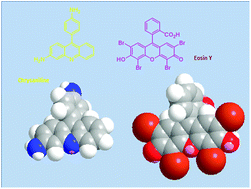当前位置:
X-MOL 学术
›
Photochem. Photobiol. Sci.
›
论文详情
Our official English website, www.x-mol.net, welcomes your feedback! (Note: you will need to create a separate account there.)
Synthetic, small-molecule photoantimicrobials – a realistic approach
Photochemical & Photobiological Sciences ( IF 3.1 ) Pub Date : 2018-06-11 00:00:00 , DOI: 10.1039/c8pp00145f Mark Wainwright 1, 2, 3, 4
Photochemical & Photobiological Sciences ( IF 3.1 ) Pub Date : 2018-06-11 00:00:00 , DOI: 10.1039/c8pp00145f Mark Wainwright 1, 2, 3, 4
Affiliation

|
The search for suitable, low-molecular weight photoantimicrobials for use in infection control has strong foundations in conventional antiseptic research from the early-mid 20th Century. Many examples of dyes exist having conventional antimicrobial activity among the azine, acridine and triphenylmethane families which have since also been found to exhibit photosensitising capabilities. The prior employment of these examples in human antisepsis provides a practical basis in terms of low host toxicity, while extant structure–activity relationships for conventional antimicrobial activity can support the development of similar relationships for photoactivated cell killing. The range of chromophores covered allows progress to be made both in topical and deeper, fluid-involved infections.
中文翻译:

合成的小分子光抗菌剂–一种现实的方法
为合适的,低分子量photoantimicrobials用于感染控制中使用的搜索具有在从早中期20常规防腐剂研究坚实的基础个世纪。在嗪,conventional啶和三苯甲烷家族中,存在许多具有常规抗菌活性的染料实例,此后也发现它们具有光敏能力。这些实例在人类防腐中的先前应用为低宿主毒性提供了实践基础,而常规抗菌活性的现存结构-活性关系可以支持光活化细胞杀伤的相似关系的发展。覆盖的生色团范围使局部感染和更深的,与液体有关的感染都可以取得进展。
更新日期:2018-06-11
中文翻译:

合成的小分子光抗菌剂–一种现实的方法
为合适的,低分子量photoantimicrobials用于感染控制中使用的搜索具有在从早中期20常规防腐剂研究坚实的基础个世纪。在嗪,conventional啶和三苯甲烷家族中,存在许多具有常规抗菌活性的染料实例,此后也发现它们具有光敏能力。这些实例在人类防腐中的先前应用为低宿主毒性提供了实践基础,而常规抗菌活性的现存结构-活性关系可以支持光活化细胞杀伤的相似关系的发展。覆盖的生色团范围使局部感染和更深的,与液体有关的感染都可以取得进展。



























 京公网安备 11010802027423号
京公网安备 11010802027423号